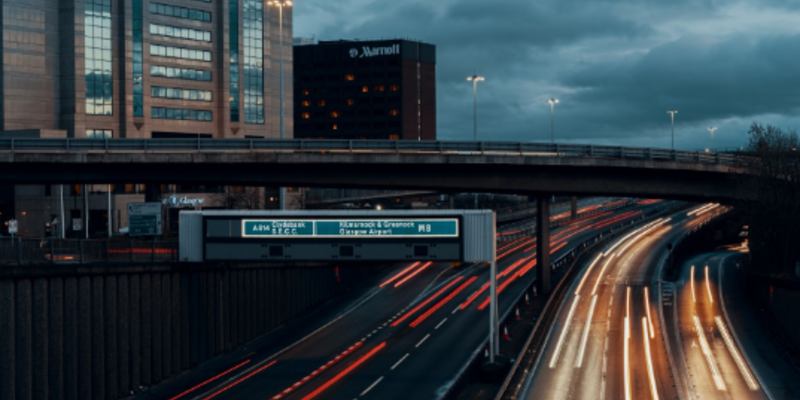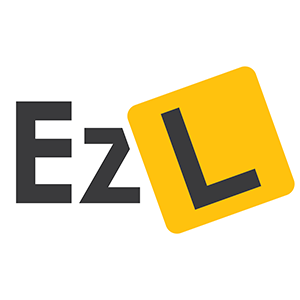What Offences Can Cameras Catch You Committing?
Last updated 24 Oct 2025

Key Takeaways
- Red light cameras are located at high-risk intersections.
- They activate if you run a red light or speed through an intersection.
- A photo of your vehicle's licence plate is taken with a timestamp.
- Offenders are usually notified by receiving a fine in the mail.
- Expect the notification within a few weeks of the incident.
Whether you’ve newly secured your learner’s, provisional or full licence, you may be wondering what offences cameras can catch you committing.
It can be eerie to drive past a traffic camera and wonder if you may have done anything to set it off, especially if you’re a new or nervous driver.
In this article, we’ll unpack the purpose of traffic cameras, what offences they catch, and what consequences you can expect if you’ve broken a driving rule within the camera’s reach.
Do all states function the same?
Before we explore what offences cameras can catch you committing, let’s first lay down some foundations.
It’s important to note that each state has their own traffic rules and regulations and varying enforcement strategies.
In saying that, you’ll find plenty of commonalities, too. While speed limits on highways may vary, speed cameras are utilised across all Australian states.
This article is intended to provide a general overview of how traffic cameras operate within Australia, so it’s important to keep your local road rules in mind while reading.
What types of traffic cameras are there?
Have you always thought there was one type of traffic camera, like the ones that flash at busy intersections and red lights?
There are actually many types of cameras that are used to surveil the roads.
Some cameras operate 24/7 without supervision, while others are only utilised for short periods and require a police officer to operate them.
Let’s take a look at some examples of traffic cameras.
Mobile speed cameras
Have you ever driven past a stationary car on the side of the motorway with only a camera inside of it? Or how have you ever seen a police officer holding a speed camera while pulled over on the side of the road?
These types of cameras are called mobile speeding cameras and can detect offences such as speeding or driving an unlicensed vehicle.
Unlike fixed speed or red light cameras, mobile speed cameras are only used for hours at a time, generally during busy periods, like public holidays, and in areas with a history of collisions or a greater collision risk.
Fixed speed cameras
Next up, there are cameras that are permanently fixed in place and are generally used in road intersections where there is a high risk of collisions.
These types of cameras don’t require any supervision or a police officer to operate them, and they also pick up speeding and driving an unlicensed vehicle.
Traffic offence red light cameras
Wondering what the difference between a fixed speed camera and a red light camera is? A red light camera is the one that flashes brightly when an offence is committed.
Located at traffic lights in areas where there is a history of collision or a high risk of collision, red light cameras are activated when someone is either driving through a red light or speeding through the intersection and exceeding the speed limit, whether the light is green, orange or red.
They work by taking a photo of the offence and the corresponding licence plate with a time stamp and are generally running 24/7 without supervision.
Once that bright light is set off, offenders should expect a fine in the post within a few weeks.
Road safety cameras
These cameras target offences other than speeding that may impact the safety of road users, such as drivers using their phones, driving with no hands, and passengers or drivers not wearing a seatbelt correctly.
Artificial intelligence is used to capture photos of drivers and passengers and their licence plates. If no offence is caught on camera, these images will delete within 72 hours; however, if these cameras catch an offence you committed while driving, you’ll be issued a fine.
What offences can cameras catch you committing when driving?
Speeding
You may have already guessed this, but the most common offence caught on cameras is driving over the speed limit.
Speed cameras are often placed in areas like traffic lights, busy intersections and highways, where there is either a history of collision or a real risk of collision occurring.
In an attempt to prevent collisions, cameras are utilised to deter drivers from speeding.
Respecting the speed limit, especially in school or pedestrian areas, is crucial to maintaining the safety of yourself and the people around you.
If you fail to do so, you can expect to receive a hefty speeding fine in the mail.
Still struggling with road safety rules like what the speed limit is when there are no signs?
We recommend taking a driving lesson with a licenced driving instructor who can help you gain a deeper understanding of road rules.
Running red lights
The second most common offence cameras can catch you committing while driving is running a red light.
Ever miscalculated how long an orange light was going for and driven on a fully red light? It’s more common than you think and can be a real danger to other road users, such as drivers or pedestrians.
Generally, red light cameras will flash you if you’ve crossed the white line after the lights have changed to red.
The rule of thumb is to always slow down when you see an orange light, especially if other drivers around you are slowing down too.
Not wearing seat belts
In the past, the only way to receive a fine for not wearing seat belts was if a police officer saw you.
But in recent years, seat belt cameras have been developed to catch drivers and passengers who have failed to wear their seat belts correctly while driving.
Even if your seat belt is buckled in, if it’s not correctly strapped across your chest and shoulder, it’ll be flagged as an offence and caught on camera.
It’s important to remember that these rules are here to keep you and your passengers safe in the event of a collision.
To find out what else you can do to keep safe on the roads, read our article here.
Using your mobile phone while driving
Seat belt cameras can also detect other types of road safety offences like using your mobile phone while driving.
It doesn’t matter whether you’re texting, calling or simply looking at your phone on your lap – if you’re on your full licence and not utilising a hands-free method, cameras will catch you committing this offence.
For learner drivers or drivers on their provisional licence, any form of mobile phone use, even if the car is stationary, will result in a fine.
Interested in learning about what is classified as an offence or is just a driving myth? Our article debunks 14 driving myths for you to understand what a driving offence is.
What happens when a camera catches you committing an offence?
So, what happens when a camera catches you committing an offence? The steps that follow will depend on which state you’ve been caught offending in, what type of licence you hold, and how severely you’ve offended.
Generally, you’ll be issued with a fine and may gain some demerit points depending on which offence you’ve committed. If the offence you’ve committed is severe, you may also lose your licence.
Below we’ll focus on the types of penalties learner drivers may incur if they’ve been caught committing an offence on camera.
Mobile camera speeding fines
If a mobile camera catches you speeding on your learner’s permit, you’re likely to receive a fine and gain some demerit points.
For example, in New South Wales (NSW), if you exceed the speed limit by 10 km/h on your learner’s permit, you’ll receive a fine of $124 alongside 4 demerit points. These figures will keep rising depending on how much faster you’ve travelled than the speed limit.
It’s also important to note that in NSW, your learner’s permit will also be suspended if you’ve received 4 or more demerit points. That means you won’t be able to drive until your suspension has been lifted (usually a minimum of three months).
What’s the fine for not wearing your seatbelt?
Each state approaches seat belts a little differently, but the general consensus is that seatbelts must be correctly worn by each passenger and can come with some hefty fines for both the driver and passengers committing the offence.
For example, in Queensland (QLD), drivers can receive a fine of up to $1,078 and receive 4 demerit points for themselves or their passengers failing to wear their seatbelts properly.
You can also be fined an additional $1,078 and 4 demerit points for each passenger failing to wear their seatbelts – so the penalties can really stack up!
Like NSW, if you receive 4 or more demerit points within 12 months while driving on a learner’s permit, your licence will be suspended for a minimum of 3 months.
What happens when you get caught driving an unregistered vehicle?
If a camera has caught you committing an offence like driving an unregistered vehicle, you can expect to incur several penalties regardless of which state you’re in.
For example, in NSW, you’ll likely get a fine and have your licence plates or vehicle seized.
The penalties increase if you’ve also been caught speeding in an unregistered vehicle.
The takeaway
In summary, each state within Australia utilises varying cameras to catch you committing offences that may impact the safety of yourself or other road users.
Offences like speeding, driving through a red light, driving an unregistered vehicle, failing to wear your seatbelt correctly and using a mobile phone while behind the wheel can land you some hefty fines and may even have your licence suspended or your vehicle seized.
If you are nervous about committing any of these offences, you may benefit from taking some driving lessons to increase your safety on the road and knowledge of the road rules.
Licenced driving instructors can do wonders in increasing your hazard perception and being more aware of the road rules.
Not too sure what to expect in your first lesson? Here’s a helpful guide!

About the author
The EzLicence online platform brings transparency, choice and efficiency to booking and managing driving instructors and driving lessons in Sydney, Melbourne, Brisbane, Perth, Gold Coast and Sunshine Coast.